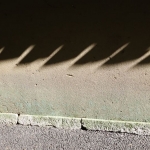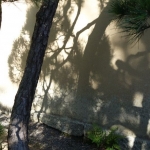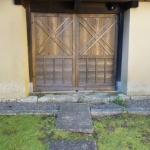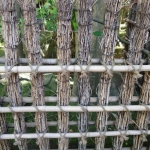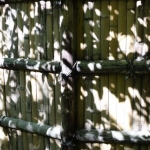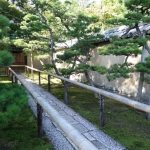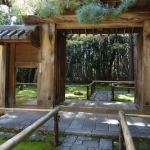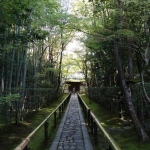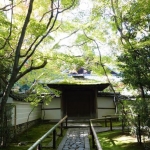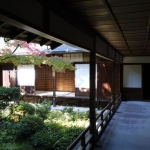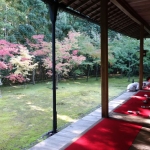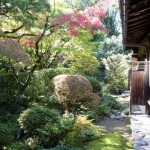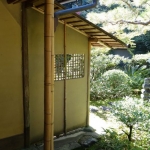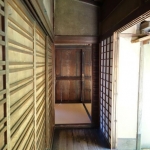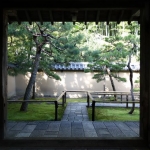Koto-in
fallen
still
garden plants
-Ryokan
Koto-in is not to be missed.
Koto-in was established at the behest of the famed military leader Hosokawa Tadaoki in 1601. Hosokawa was one of the greatest warriors of his time, and one of the few to survive the bloody wars which culminated in the establishment of the Tokugawa Shogunate in the beginning of the seventeenth century. In addition to his martial skills, he was a man of great intellectual attainment and taste.
His wife, Tomo, took the name Gracia (1563-1600) when she converted to Christianity.
Rewarded with vast domains following the wars, in his later life he devoted himself to the study of Zen under the famous Daitoku-ji abbot Seigan and became a Buddhist priest with the name Sansai. He was also noted as one of the most distinguished disciples of the eminent tea master Sen Rikyu.
Koto-in’s famous tea-house, also known as Shoko-ken, was built by Hosokawa himself. Some say his study was constructed of the dismantled remains of Sen Rikyu’s residence. Next to it stands a now famous wash-basin, hollowed from a stone brought to Japan from the Imperial Palace in Korea. And a stone lantern, which Hosokawa loved, stands as a marker to his and his wife’s graves.
Koto-in also has in its possession numerous rare paintings and objects d’art from both Chinese and Japanese lineage.
One of the tea bowls is over 800 years old and has remarkably survived an era when a man destroyed his treasured bowls before he died.
The graves of the early Kabuki dancers, Nagoya Samzaburo and Izumo-no-Okuni (the originator of Kabuki) are also found here.
For more information see https://en.wikipedia.org/wiki/Hosokawa_Gracia


